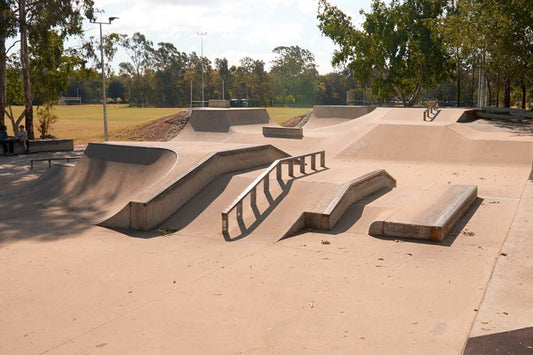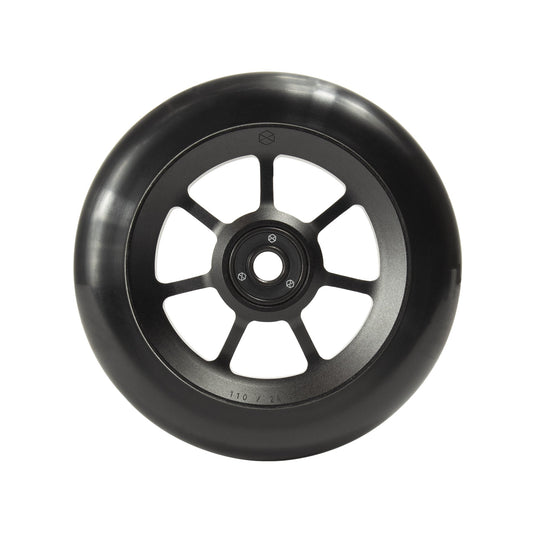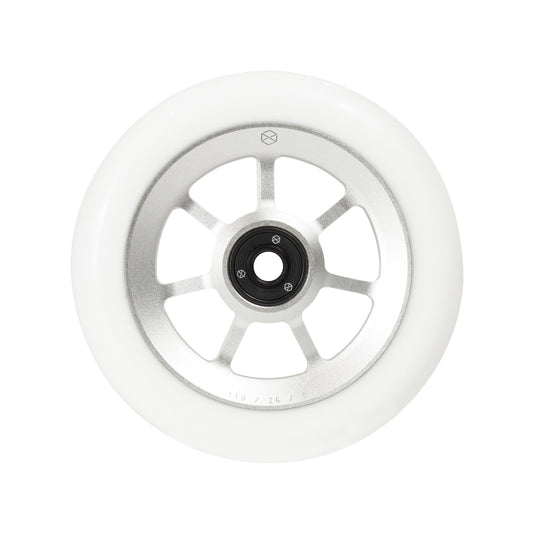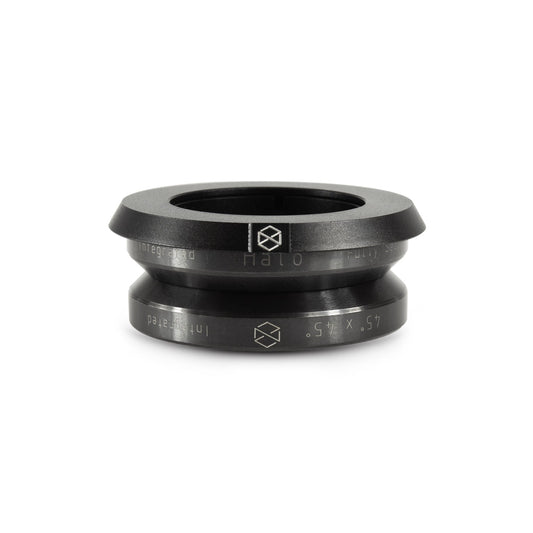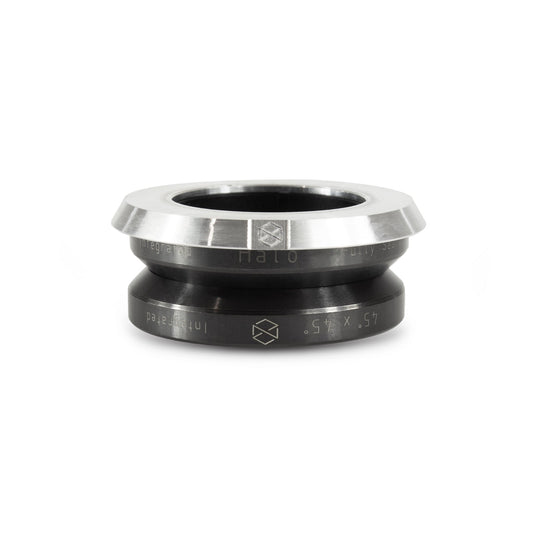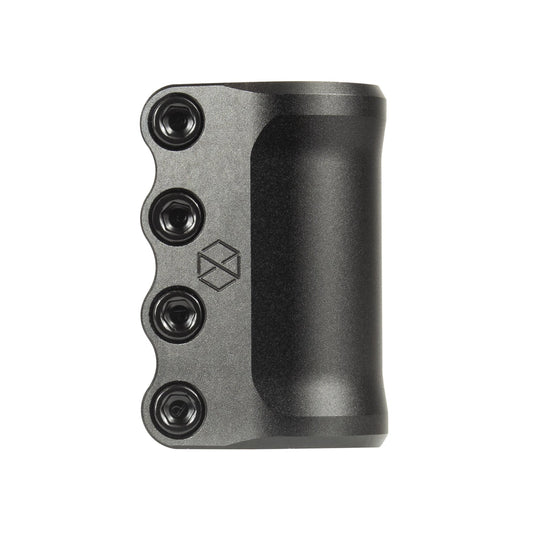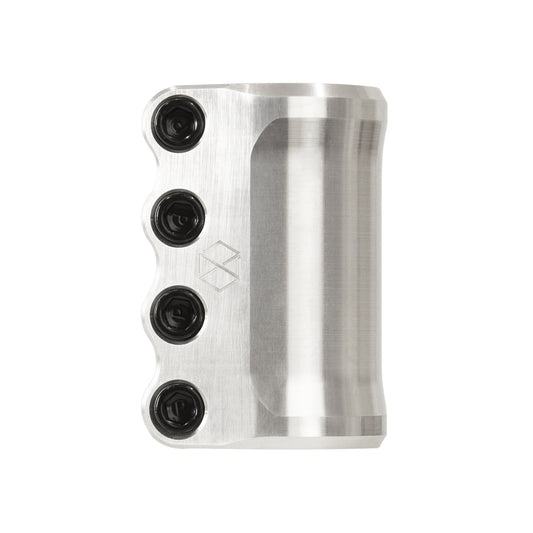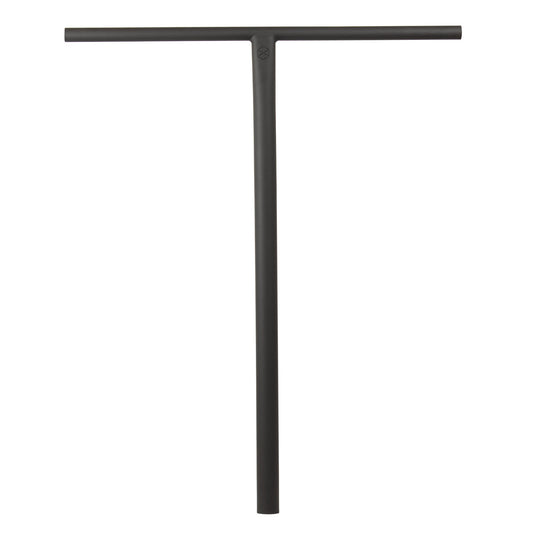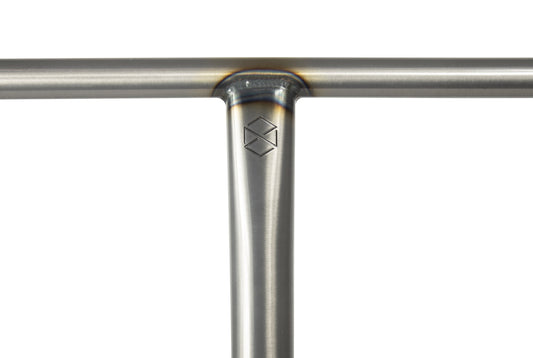We designed the Advent Refined to make an ultra-light street deck focused on technical and progressive street riding. We tested three different iterations with multiple blunt plates, crook grooves, and connection methods before we finally went into production.

The philosophy that went into creating the Cargo:

Headtube
The Advent Refined headtube is machined to be as slim and light as possible. On the Cargo, we only machined out the front, we left the back at its full thickness which works well aesthetically and structurally to provide extra strength.
Both the Cargo and the Refined have an 83-degree headtube angle at the request of the NATIVE team riders. A notable benefit of an 83-degree headtube angle is that you can stir your whips faster. This feature is evident when watching riders who regularly double and triple whip like Levi Knight.
Downtube
The downtube on the Refined starts as a full extrusion with 3 walls but we machine out the walls on each side which is partly for weight reduction and partly for aesthetics. This I-beam style has become iconic to the NATIVE Advent range since 2017 when our first deck dropped.
For the Cargo downtube, it's the same extrusion but the walls are machined in just a little bit. Again, partly for reducing weight and partly for looking good. Having no cut-out adds strength compared to the Refined and reduces flex creating a more solid feeling deck.
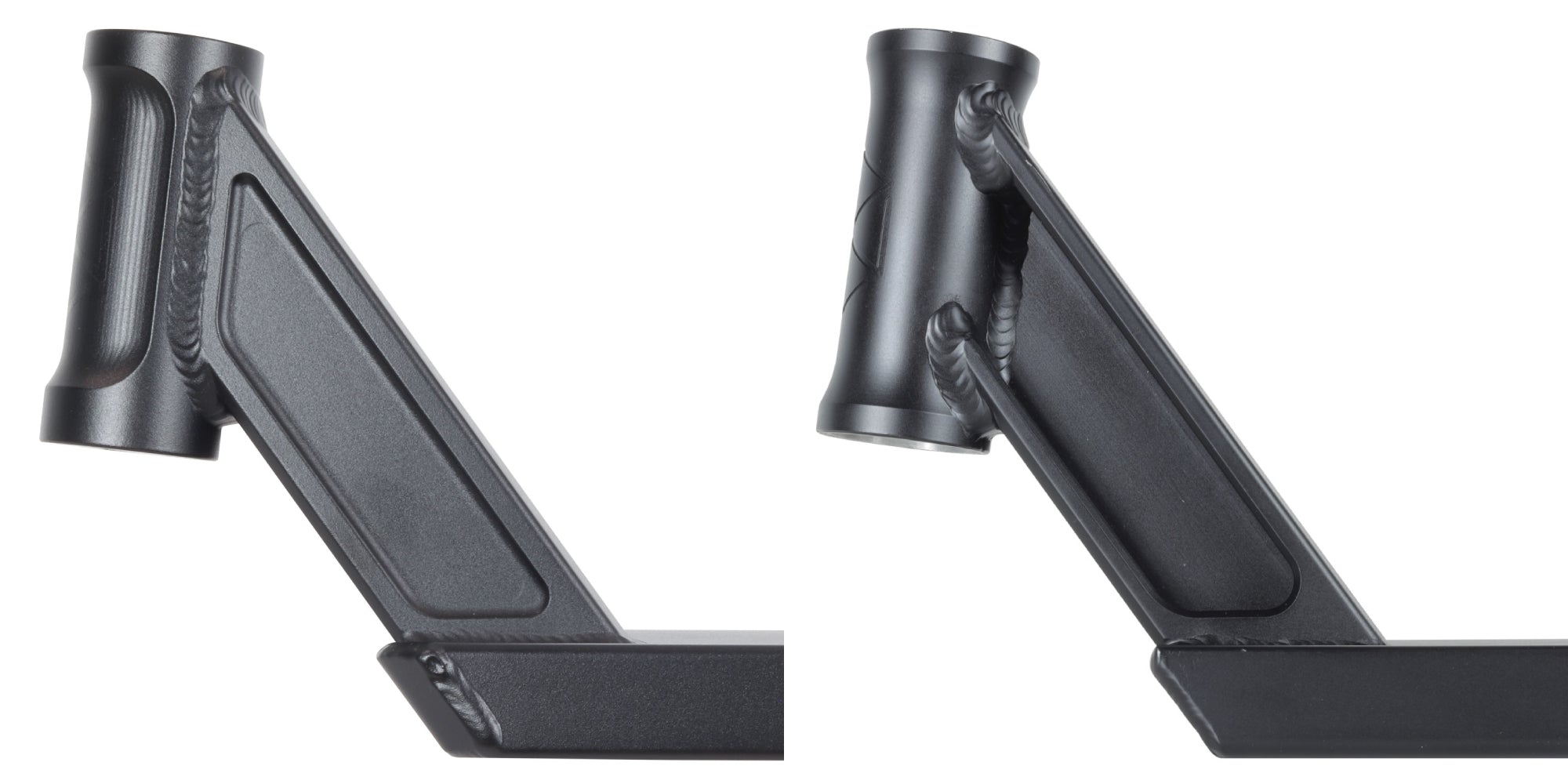
Left: Cargo Deck. Right: Advent Refined Deck.
Blunt Space (the space between the very front of your deck and your fork)
The Cargo has the same blunt space as the NATIVE Advent II which quickly became known for its smaller blunt space that was optimized for real street riding. The smaller the blunt space, the more likely you're going to be able to find handrails you can blunt slide.
For the Advent Refined, we increased the blunt space by 10mm. This keeps it small enough to blunt rails and the majority of skatepark ledges while making it easier to get a good blunt stall on a quarter pipe. The increased blunt space also aids in an improved crook geometry.
Blunt plates
The Blunt plates on the refined are set inside the deck and have a chamfered edge before welding. The weld fills that space connecting the blunt plate to the deck in a way that creates a very flush front end with very little weld protruding. The Cargo blunt plates are a bit thicker but rest on the outside of the extrusion. The Refined blunt plates are square to the edges, this inspires confidence for precision and technical tricks such as 5050s through kink rails. The Cargo blunt plates have rounded corners which promotes a higher likely hood of sliding a blunt on a concrete ledge.
Crook Groove
While both decks feature the same crook groove due to the shape of the extrusion, the blunt space and the way the blunt plates are positioned make each deck crook differently. The Cargo blunt plates being set on the outside of the extrusion mean the crook groove is deeper, a deeper crook groove will help you to stay locked into your crook once you’re in it.
The Refined blunt plates being recessed create a mellower front giving riders more available space to crook.

Left: Cargo Deck. Right: Advent Refined Deck.
Extrusion
The extrusion on the Advent Refined is as thin and light as it gets. The lower profile 4 wall extrusion will get your feet closer to the rail while the radial concave hugs your feet perfectly. To reduce friction when board sliding rails the Refined has a mellow raised middle section for the first time on a NATIVE deck. The Cargo Deck features the original Advent II extrusion, for years regarded as the best street deck on the market. 6 vertical walls, a taller profile, extra material in the flat bottom plate of the deck make this an indestructible extrusion designed to handle the gnarliest of drops and slide through the grimiest of spots.
Brake / Fender
The Nylon Brake that comes with the refined is the most thought-out brake the scooter industry has ever seen. The Nylon Brake has a metal insert that touches the wheel when braking ensuring the nylon won't melt. The nuts are housed in a specially designed plastic mold so you only need an Allen key to adjust your brake. The alternate-height spacers in the brake are a world first in scooter design that allows riders to raise or lower their brake depending on their wheel size. This allows perfect fitment and the ability to choose brake responsiveness on certain wheel sizes.
The Omni Fender featured on the Cargo Deck has a unique fastening channel that only requires a 4mm Allen key for tightening. Riders can slide the Omni Fender back to within millimeters of whichever wheel size you choose to run, maximizing foot space and comfort for the rider.

Left: Omni Fender on a Advent II Deck. Right: Nylon Refined Brake on a Advent Refined.
Weight
The smallest Cargo Deck measures 5.5x22 and weighs 2070 grams.
The largest Cargo Deck measures 6.5x23.5 and weighs 2240 grams.
The smallest Advent Refined Deck measures 5.5x21 and weighs 1685 grams. The biggest Advent Refined Deck measures 6.25x23.5 and weighs 1972 grams. For a direct weight comparison, a 5.5x22 Refined weighs 1750grams
While a 5.5x22 Cargo weighs 2070grams.
The NATIVE Advent Refined is 15.5% lighter than the NATIVE Cargo Deck.

